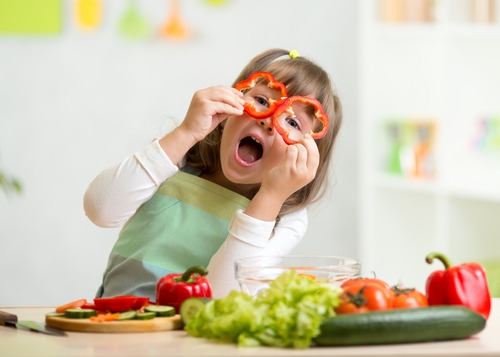
Are you getting all of the nutrients your body needs for optimal eye health? Making sure you’re getting the right amount of nutrition to keep yourself healthy can be difficult, and many people don’t take into consideration what their eyes might need, too.
While eating a healthy diet cannot cure eye disease, making a habit of healthy eating can certainly help prevent common eye diseases later in life. Below are some examples of the best foods for eye health.
Green, Leafy Vegetables
Dark, leafy greens such as kale, spinach, swiss chard and collard greens are excellent natural sources of lutein and zeaxanthin, two important carotenoids. Carotenoids are plant pigments that create the colorful hues found in many fruits and vegetables. Studies show that the retina and lens of our eyes contain concentrated amounts of lutein and zeaxanthin, indicating each carotenoid plays a leading role in eye health.
Research also suggests that you can lower your risk for cataracts and age-related macular degeneration (AMD) — the leading cause of irreversible blindness in adults — by incorporating more foods into your diet that are high in lutein and zeaxanthin. If you don’t like leafy greens, try incorporating other carotenoid-rich foods such as orange and yellow peppers, squash, or sweet potatoes.
Eggs
While dark, leafy greens contain the highest concentration of carotenoids, there are some studies that suggest eggs are one of the better foods for eye health, due to the amount of fat in the yolk. According to the research, consuming lutein and zeaxanthin with fat helps the body better absorb carotenoids into the bloodstream.
From scrambled eggs and omelets to quiche, frittatas, and more, eggs are a versatile and nutritious food for eye health.
Omega-3 Fatty Acids
Several studies have shown that omega-3 fatty acids may help protect adult eyes from eye problems such as macular degeneration, dry eye syndrome, and cataracts. Clinical research has even shown that baby formulas fortified with omega-3 fatty acids help stimulate vision development in infants.
While omega-3 fatty acids are primarily found in fatty fish like salmon, trout, and tuna, you can also incorporate them into your diet by eating flaxseed, chia seeds or hemp seeds. Not a fan of seed texture or flavor? Try adding pre-ground flax meal to smoothies, oatmeal, or granola — you won’t notice the difference!
Vitamin C
Vitamin C, or ascorbic acid, is a powerful vitamin and antioxidant for eye health. Scientists have found evidence that suggests adding vitamin C into your diet may help reduce the risk of cataracts and vision loss due to macular degeneration.
While vitamin C is typically associated with citrus fruits, one serving of raw red peppers contains 283 mg of vitamin C — that’s 277% more vitamin C than one cup of orange juice!
Green peppers, strawberries, and broccoli are also great sources of vitamin C. In order for your body to experience the full benefits of most naturally-occurring vitamins and antioxidants, it’s best to eat fresh, raw fruits and vegetables.
Conclusion
Adding these healthy foods to your diet is a natural way to reduce the risk of eye disease and improve the overall health of your eyes. However, it’s important to remember that these actions are mostly preventative — scheduling routine visits with your eye doctor is still the best way to build a treatment plan for improving your vision.
Here at Vision First Eye Center, we specialize in providing convenient, family-oriented eye care. We’re happy to answer any questions you have about improving your eye health. Give us a call at (205) 949-2020 or Book an Appointment today!








